Overview of the Render Network (RNDR)
The Render Network is a decentralized platform that utilizes blockchain technology and cryptocurrency to connect users who need 3D rendering services with those who have unused GPU power. This peer-to-peer (P2P) network allows individuals to contribute their spare graphics processing unit (GPU) capacity for rendering visual effects (VFX) and other 3D graphics projects. Users who provide their computational resources are rewarded with Render tokens (RNDR), the native cryptocurrency of the Render Network.
This innovative approach solves several challenges in the world of 3D rendering, making it more cost-efficient, scalable, and accessible. The Render Network, built on the Ethereum blockchain and using OctaneRender (a rendering software developed by OTOY), serves as a crucial building block for next-generation digital products and services, particularly in the metaverse, gaming, film, and other industries that rely heavily on high-performance graphics.
Key Components and Features of Render Network
1. 3D Rendering in the Crypto Metaverse
3D rendering is at the core of digital entertainment—whether it’s for animated movies, video games, or virtual reality (VR) experiences. However, the process of rendering 3D graphics is computationally intensive and requires significant GPU power. In the context of the crypto metaverse, where immersive environments and high-quality graphics are central, the demand for rendering has skyrocketed. As a result, efficient, decentralized, and cost-effective solutions for rendering are in high demand.
2. Decentralized Peer-to-Peer Network
Render Network operates on a peer-to-peer (P2P) model, where users can rent out their unused GPU resources to help others render their 3D models and visual effects. This creates a marketplace where both individuals and businesses can tap into underutilized computational power in a highly scalable and efficient manner. Render Network’s decentralized nature also offers a more flexible and affordable alternative to traditional cloud rendering services.
3. Earn RNDR Tokens for Contributing GPU Power
Participants in the Render Network are rewarded with RNDR tokens, which serve as the utility token for the platform. Node operators (those who offer their GPU power) earn RNDR tokens in return for completing rendering jobs, while creators (those who commission rendering work) pay for the service in RNDR tokens. This model aligns incentives within the network and creates an economic system where both parties benefit.

Core Pain Points Render Network Addresses
Render Network provides solutions to key challenges in the 3D rendering industry:
- Scalability: The network can scale up or down based on demand, efficiently handling rendering tasks of any size. This scalability allows users to tap into a large pool of computational resources without needing to own expensive data centers or cutting-edge hardware.
- Cost-Effectiveness: By leveraging a decentralized marketplace, Render reduces the cost of rendering compared to traditional cloud services. GPU owners can monetize their idle devices, while creators benefit from cheaper rendering services.
- Optionality: The network offers flexibility for both creators and node operators. Creators can choose from different pricing tiers depending on the urgency and quality of the rendering job, while node operators can decide which jobs to take based on their available GPU resources.
- Intellectual Property (IP) Protection: Unlike centralized rendering services that might expose creators’ work to potential risks of censorship or unauthorized use, Render Network uses blockchain to ensure data integrity, immutability, and security. This guarantees that creators’ IP is protected throughout the rendering process.
How Render Network Works
1. Proof-of-Render (PoR) Governance
The Render Network operates on a Proof-of-Render (PoR) system that integrates a multi-tier reputation model to ensure the quality of work performed. The system mimics Proof-of-Work (PoW) in the sense that node operators use their computational resources (GPU power) to earn tokens, but instead of solving complex cryptographic puzzles, they render 3D graphics.
- Reputation System: Both creators and node operators earn reputation scores. Creators’ reputation scores determine how quickly they can get rendering tasks done, and high-ranking node operators are assigned more high-paying jobs.
- Tiered Service Model: Render Network offers a tiered service model, where creators can choose from:
- Tier 1 (Trusted Partners): High-quality, reputable service providers for urgent or complex jobs.
- Tier 2 (Priority): Faster processing for medium-priority tasks.
- Tier 3 (Economy): Lower cost, longer processing times for less urgent jobs.
These tiers allow for flexibility in both pricing and processing speed based on the user’s needs.
2. Blockchain and Ethereum Integration
Render Network is built on the Ethereum blockchain, with smart contracts and payments being processed securely through Ethereum. Blockchain’s decentralized nature helps mitigate the risks associated with centralized services, ensuring the integrity of transactions and data.
- OctaneRender: Render Network uses OctaneRender, a professional rendering application, to execute rendering tasks. It utilizes the ORBX media and streaming framework to facilitate fast and efficient rendering processes.
3. Job Matching and Automated Reputation Scoring
Render Network uses an automated job-matching system to match creators with node operators who have the best reputation and computational resources to meet the job requirements. This ensures a balance between the job’s complexity and the node operator’s ability to deliver.
- Efficiency and Feedback: Node operators are continually evaluated based on performance metrics, such as rendering quality and efficiency. If a node operator consistently underperforms, they may be penalized, and the system will automatically reroute jobs to more capable nodes. Feedback from creators helps adjust node operators’ reputation scores, ensuring high-quality service.

Render Network Use Cases
- Film and Animation: Studios and individual artists can use Render Network to access affordable and scalable rendering power for movie production and animation, reducing the costs and time associated with traditional rendering farms.
- Game Development: Game developers can use Render Network for rendering 3D environments, characters, and assets, particularly for high-quality and real-time graphics required in modern gaming engines and VR.
- Virtual Reality and Metaverse: With the rise of the metaverse, platforms and creators can leverage Render’s decentralized network to handle the rendering needs for immersive 3D virtual environments, saving on the high costs of cloud-based rendering solutions.
- Scientific and Industrial Visualization: Industries like architecture, engineering, and medicine require high-quality rendering for simulations, product designs, or scientific modeling. Render Network provides these sectors with affordable access to GPU resources.
- Augmented Reality (AR): Augmented reality applications, which often require complex real-time rendering of 3D objects overlaid on the real world, can also benefit from Render’s distributed GPU power.
Render Token (RNDR)
RNDR is the native utility token of the Render Network, and it is used for several purposes:
- Payment for Rendering Services: Creators pay node operators with RNDR tokens for 3D rendering jobs.
- Staking and Governance: RNDR token holders can stake their tokens to participate in the governance of the Render Network, voting on proposals and influencing decisions on network upgrades.
- Incentive for Node Operators: Node operators earn RNDR tokens by providing GPU power for rendering tasks.
Benefits of Render Network
- Decentralization: Render Network removes the need for centralized cloud providers, providing users with more control over their computational resources and greater privacy.
- Efficiency and Scalability: The network’s ability to scale based on demand means that rendering jobs can be handled in real time, even for large or complex tasks, without the need for high upfront investment in hardware.
- Cost-Effective: Creators can access rendering services at a lower cost compared to traditional GPU rendering farms and cloud providers, while GPU owners can earn passive income by contributing their unused computational power.
The Render Network is a groundbreaking decentralized platform that is reshaping the way 3D rendering and visual effects are delivered. By tapping into underutilized computational resources from GPU owners around the world, Render Network provides an affordable, scalable, and secure solution for rendering high-quality digital content in real-time. With its Proof-of-Render governance system and the use of blockchain for IP protection, payment verification, and decentralized job matching, the Render Network is poised to become a foundational component of next-generation digital products and services, especially in the burgeoning metaverse and VR industries.



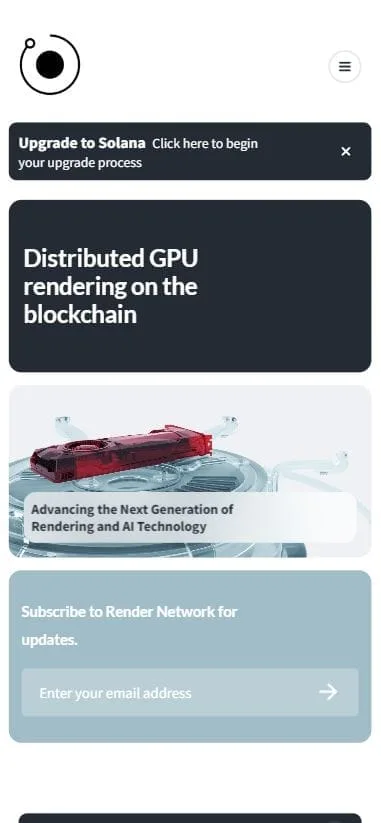
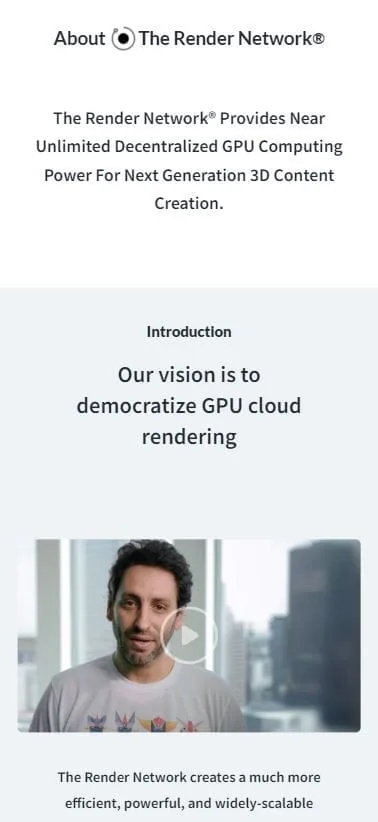
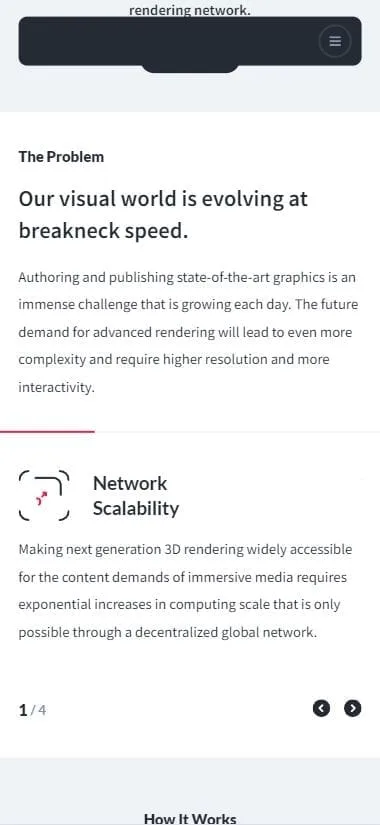
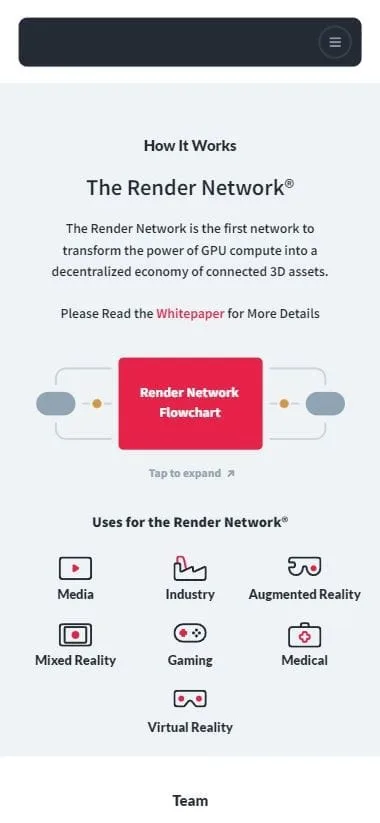













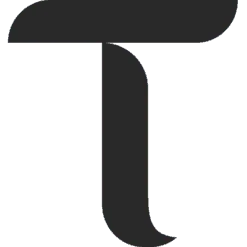
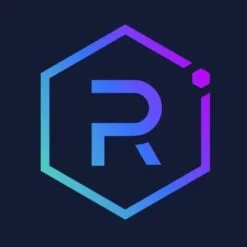

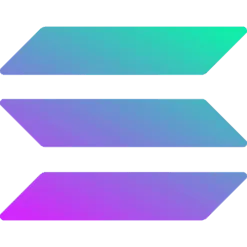
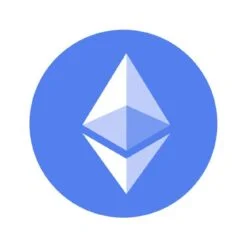
Anthonywax –
Blockchain technology news
Harran –
اتقع نجاح كبير
Harran –
👍
Htorres –
I bought at $11 and I’m buying all I can right now like my life depended on it. Whole market is down. Once it goes back it will rocket